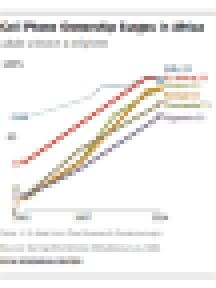Triumphs and Troubles in Online Learning Abroad

I’ve at all times considered the U.S. because the chief in digital studying, representing essentially the most adventurous improvements. But currently I’ve realized my notion could also be flawed by a false sense of American exceptionalism.
In Canada, for instance, about two-thirds of colleges offer online degrees—and many have for years. While right here in the U.S., a much smaller quantity grant levels on-line.
I assumed it could be good to do some digging to discover a extra nuanced appreciation of the standing of digital instruction exterior the U.S.
At the very daybreak of digital training, Canada launched one of many very first studying administration techniques, WebCT, a pivotal utility, invented on the University of British Columbia in 1997. Branded ultimately as Blackboard, it was the market chief in the U.S. and Canada for a while, and even right this moment the corporate is in second place, with DTL Brightspace, a Canadian agency, close behind.
Years earlier than the University of Phoenix launched its first on-line course in the U.S., powered by CompuServe, an early on-line service supplier, the University of Toronto, achieved the historic distinction of working the world’s first-ever completely online course 5 years earlier in 1986. Since these early days, two million Canadian college students averted COVID-19 hazard, continuing their studies remotely during the pandemic at Canada’s absolutely on-line faculties—together with Athabasca University in Alberta and at extremely ranked faculties like McGill University in Montreal.
South of the U.S. border, Tecnológico de Monterrey, a non-public college, based in 1943 by a gaggle of rich native enterprise executives, helps 33 campuses throughout the nation and in 15 nations overseas. Commonly often called Monterrey Tech, it broadcast its top quality greater than 20 years in the past by way of satellite tv for pc. Today, its Virtual University enrolls 12,000 college students. Another 26,000 examine at a lower-cost affiliate, Tech Millennium. That school requires its 60,000 conventional college students—lots of whom come from different Latin American nations—to take not less than one on-line course earlier than they graduate. Following Monterrey’s success, different Mexican larger ed establishments have launched new online programs mirroring Monterey Tech’s model.
But the scenario in the remainder of Latin America is much less bold, with pretty low on-line studying penetration in the area’s faculties and universities, a troubling plight discovered all through the underdeveloped world. In Latin America, solely about 15 % of upper ed establishments supply hybrid choices, and solely about 20 % ship absolutely on-line programs. Unfortunately for college kids, only a third of these are accredited.
In Europe, most faculties moved to distant studying because the COVID-19 pandemic compelled well being restrictions. Even earlier than the disaster, virtually all European larger ed establishments provided digitally enhanced studying, and more than half were delivering or planning to introduce online degrees. In the U.S., it took the pandemic to propel the web rush, solely not too long ago resulting in half of all American higher ed students taking at least one online course.
In the United Kingdom in explicit, the Open University is among the many best on-line studying success tales. Launched in 1969 as a distance-learning school, broadcasting programs on tv, it’s the largest college in Britain and one of many greatest in Europe, with more than 175,000 students and greater than two million alumni.
In gentle of simmering U.S. conflicts with China and Russia, I assumed it helpful to check out digital training in these two nations. The distinction between the 2 is sort of extraordinary, with Russia forging forward as China holds again. Since the Bolshevik Revolution, first the Soviet Union, and now the Russian Federation, pushed distant studying as key to its aim of selling mass training. To my shock, I found that greater than half of its 7.4 million larger ed college students are in on-line packages, supported by a thriving system little known in the West. China, however, provides no on-line levels and is unlikely to introduce any for an additional a number of years.
Poor Internet Access Cripples Online Higher Ed
When the pandemic careened throughout the globe in spring 2020, U.S. larger ed responded swiftly by opening online in a few weeks , a feat made doable solely as a result of privileged American secondary intuitions way back launched digital entry in practically each school in the nation. As campuses locked their gates out of worry of an infection, most American school college students rushed to their laptops to check from dwelling.
Elsewhere, not everybody was as lucky. During the worldwide disaster, 1.6 billion younger folks in 161 nations weren’t in school. Shockingly, with out web entry, COVID-19 locked out near 80 percent of the world’s enrolled college students. Africa was hit hardest, cruelly, with 82 % of school college students in sub-Saharan Africa without internet access.
Most school college students in the U.S. continued to attend class remotely because the virus erupted and receded like storm waves, largely unaware that so many elsewhere had been locked out. Globally, the best impediment to common on-line larger ed just isn’t cussed educational officers who reject digital training as being inferior substitutes for face-to-face instruction, however poor web entry, mostly in Africa and elsewhere in the Global South.
Worldwide, greater than half of households have an internet connection. In the developed world, practically 90 % are related, however in the least developed nations only about 20 percent are plugged in. With the bottom web entry in the world in sub-Saharan Africa, common broadband penetration is at a mere 2 %, with nearly 90 percent of students without computers at home South Africa, the continent’s brilliant spot, is the strongest early adopter of digital training with 63 percent of the population online.

Phil Hill, a distinguished edtech advisor, instructed me that as a result of Africans are compelled to introduce cellular, not as an add-on, however as a precedence, “from day one, Africans optimize digital learning for mobile. They are quite resourceful in ways we haven’t seen in the developed world.”
Cell cellphone use is as frequent right this moment in South Africa and Nigeria as in the U.S. While smartphones are usually not as broadly accessible, the units are starting to proliferate in a number of nations, including 34 percent in South Africa. Compared to constructing massively costly faculties on floor, digital campuses with direct cellular entry are less expensive and a much more fast means ahead. Some observers predict that mobile learning will be the principal mode in Africa in this decade.
Countries which have critically invested in internet infrastructure discovered themselves with a significant benefit in the course of the pandemic. Take the small Baltic nation, Estonia. Long earlier than the coronavirus invaded, Estonia made high-speed web entry a nationwide precedence—one of many first nations in the world to declare web entry a human proper. And its faculties had been some of the quickest to move online during COVID-19.
The pandemic taught us that the web is now not a nice-to-have, however decisively, a need-to have, a necessary utility, like electrical energy and working water. Virtual studying, too, should be as ubiquitous as standard larger training, particularly for college kids too removed from school campuses to attend head to head, and now for a lot of in our post-industrial economic system, compelled to work to earn school levels.
Clarification: This article has been up to date to notice that Open Universities in Asia supply training in a spread of codecs, not simply on-line training.






